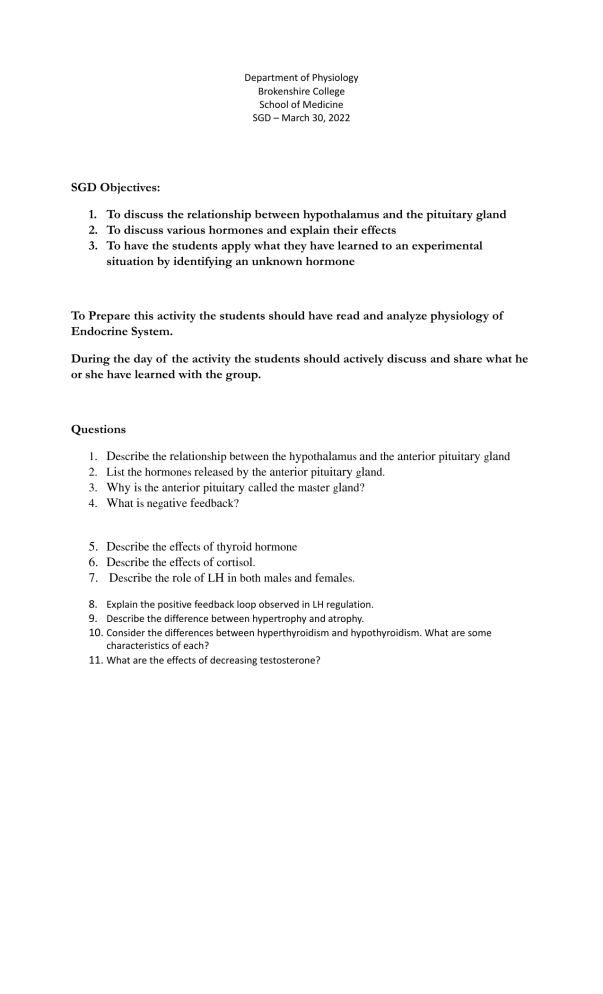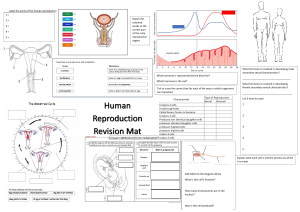Endocrine System SGD Activity: Hypothalamus, Pituitary, Hormones
advertisement

Department of Physiology Brokenshire College School of Medicine SGD – March 30, 2022 SGD Objectives: 1. To discuss the relationship between hypothalamus and the pituitary gland 2. To discuss various hormones and explain their effects 3. To have the students apply what they have learned to an experimental situation by identifying an unknown hormone To Prepare this activity the students should have read and analyze physiology of Endocrine System. During the day of the activity the students should actively discuss and share what he or she have learned with the group. Questions 1. 2. 3. 4. Describe the relationship between the hypothalamus and the anterior pituitary gland List the hormones released by the anterior pituitary gland. Why is the anterior pituitary called the master gland? What is negative feedback? 5. Describe the effects of thyroid hormone 6. Describe the effects of cortisol. 7. Describe the role of LH in both males and females. 8. Explain the positive feedback loop observed in LH regulation. 9. Describe the difference between hypertrophy and atrophy. 10. Consider the differences between hyperthyroidism and hypothyroidism. What are some characteristics of each? 11. What are the effects of decreasing testosterone? Table 1: Fill in the blanks the effect of the Hormone to the Target organ: Laboratory Proper: Data: There were seven sets of male laboratory rats in this experiment. Two rats per set; one set was control group and the others were in experimental group. In each set of rats, one was “intact” rat and the other was a “castrated rat” The six experimental group of rats were injected with a hormone on daily basis for 2 weeks. All rats were autopsied after 2 weeks. To help in determining the identity of the unknown hormones, the student should look for changes be- tween the control values and the values of the unknown hormone (both the intact and castrate animal). The changes between the control rats and the rats that were treated with the unknown hormone should be >20% if they are to be considered significantly different. If the change is <20%, it is attributed to experimental or biological error. Experimental errors may include small errors in calibration procedures, measurements, or instrumentation. Any variability that occurs because of the differences between animals is considered biological error. Figure 1 Figure 3 Figure 2 Figure 4 Figure 5 Figure 6 Figure 7 Analysis: 1. 2. Determined the Hormone 1 in Figure 2 and explain your answer? Determined the Hormone 2 in Figure 3 and explain your answer? 3. 4. 5. 6. Determined the Hormone 3 in Figure 4 and explain your answer? Determined the Hormone 4 in Figure 5 and explain your answer? Determined the Hormone 5 in Figure 6 and explain your answer? Determined the Hormone 6 in Figure 7 and explain your answer? Use the autopsied data from each respective rats, Table 1 and the (-) feedback mechanism.



